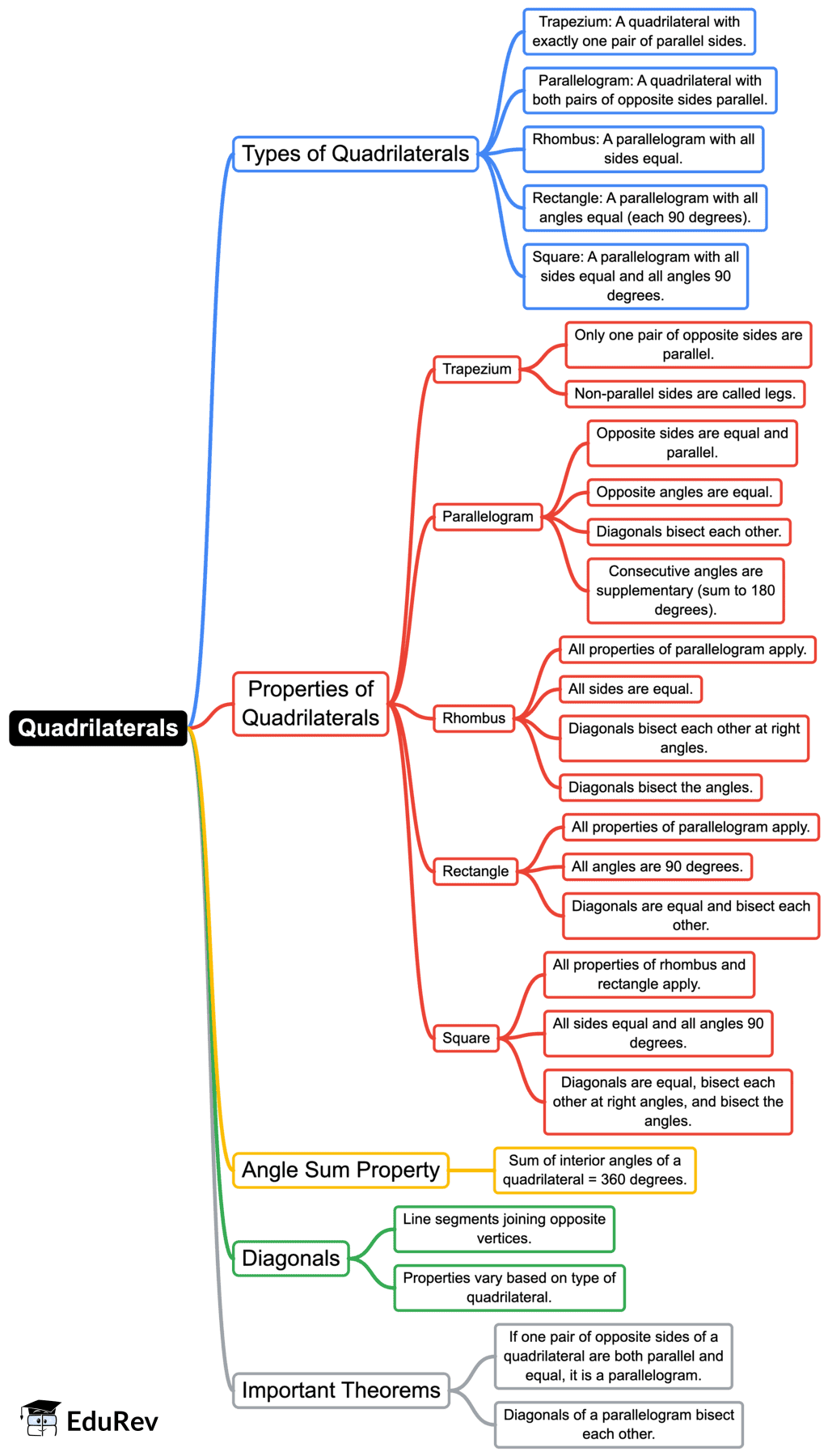Class 9 Exam > Class 9 Notes > Mathematics (Maths) Class 9 > Mind Map: Quadrilaterals
Mind Map: Quadrilaterals | Mathematics (Maths) Class 9 PDF Download

The document Mind Map: Quadrilaterals | Mathematics (Maths) Class 9 is a part of the Class 9 Course Mathematics (Maths) Class 9.
All you need of Class 9 at this link: Class 9
|
40 videos|470 docs|56 tests
|
FAQs on Mind Map: Quadrilaterals - Mathematics (Maths) Class 9
| 1. What are the different types of quadrilaterals? |  |
Ans. Quadrilaterals can be classified into several types, including squares, rectangles, rhombuses, parallelograms, trapezoids (trapeziums), and kites. Each type has specific properties that distinguish it from the others, such as the lengths of sides, angles, and symmetry.
| 2. How do you calculate the area of a quadrilateral? |  |
Ans. The area of a quadrilateral can be calculated using different formulas depending on its type. For example, the area of a rectangle is found by multiplying its length by its width. For a trapezoid, the area can be calculated using the formula: Area = 1/2 * (base1 + base2) * height. For irregular quadrilaterals, you can divide it into triangles and sum their areas.
| 3. What are the properties of a parallelogram? |  |
Ans. A parallelogram has several key properties: opposite sides are equal and parallel, opposite angles are equal, and the diagonals bisect each other. Additionally, the sum of the interior angles of a parallelogram is always 360 degrees.
| 4. How do you determine if a quadrilateral is a parallelogram? |  |
Ans. To determine if a quadrilateral is a parallelogram, you can check if either pair of opposite sides is equal and parallel, or if both pairs of opposite angles are equal. Another method is to verify if the diagonals bisect each other.
| 5. What is the difference between a rectangle and a rhombus? |  |
Ans. The main difference between a rectangle and a rhombus lies in their angles and sides. A rectangle has four right angles and opposite sides that are equal, while a rhombus has all four sides equal in length but does not require right angles. In fact, the angles of a rhombus can be acute or obtuse.
Related Searches
















